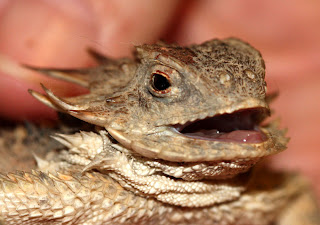Last night was one of the Tucson Amateur Astronomy Association's (TAAA) twice-a-year Star-B-Ques, held at the picnic area about 1.5 miles below the mountaintop National Observatory on Kitt Peak. It is a great location for such an event - plumbing for bathrooms, easy access, and great dark skies only about a 75 minute drive from Tucson. Our rainy season weather has been winding down, and we had high hopes for clear skies, but of course, you always take your chances!
 But obviously, fate was working against us. The clouds, though broken, revealed wonderful clear skies to the far south, showing Scorpius and part of the Milky Way on the southern horizon, but little chance for overhead observing. Mostly folks stood around and visited for a time. I jokingly announced - "why don't some of you leave, so that it will clear up!" While most had a good chuckle, after 20 minutes or so folks started leaving and as predicted, we had some pretty good skies a little bit later! I had a photo project in mind, so even with the clouds and with digital exposures costing little, had 2 cameras going showing clouds and stars intermingling. The view towards the east showed the cloud bottoms lit up not by the rosy glow of twilight, but the yellowish glow of the mostly sodium lighting of Tucson. The shot here shows that effect plus the trails of 3 (!) satellites converging nearly from the same spot!
But obviously, fate was working against us. The clouds, though broken, revealed wonderful clear skies to the far south, showing Scorpius and part of the Milky Way on the southern horizon, but little chance for overhead observing. Mostly folks stood around and visited for a time. I jokingly announced - "why don't some of you leave, so that it will clear up!" While most had a good chuckle, after 20 minutes or so folks started leaving and as predicted, we had some pretty good skies a little bit later! I had a photo project in mind, so even with the clouds and with digital exposures costing little, had 2 cameras going showing clouds and stars intermingling. The view towards the east showed the cloud bottoms lit up not by the rosy glow of twilight, but the yellowish glow of the mostly sodium lighting of Tucson. The shot here shows that effect plus the trails of 3 (!) satellites converging nearly from the same spot!Eventually we did get some good skies and I hunted down and pointed the C-14 to Comet Garrad C/2009P1, bright enough to spot in Paul Lorenz's 20X binoculars. It is about 8th magnitude and looked great in the 14", sporting a nice stubby tail. I mounted the 200mm zoom lens piggyback on the scope and took 3-90 second exposures at F/3.2 to stack for this result. It is about a fourth of the original frame so is about 2.5 degrees high, with North up. The comet is slowly getting farther from us as it approaches the sun, so slowly grows brighter. About the end of the year, it starts moving away from the sun, but Earth's orbital motion again gets us closer to the comet to keep it about the same brightness. It won't get naked eye, but from a dark sky should be a binocular comet well into Spring!
The sky stayed clear long enough for us to observe some fall galaxies, the Helix Nebula, and some good views of Jupiter and it's 4 Galilean moons as it rose in the NE. When first observed less than 10 degrees off the horizon, the atmospheric turbulence had it shimmering pretty well, but even then, belt details could be seen. Just before clouds came in and convinced us to pack up at 10pm, a dark brown oval could be seen transiting the meridian in the North Equatorial Belt, and the Great Red Spot could be seen approaching the meridian in the south belt. The view was quite similar to the amazing webcam shot by Phoenix amateur Tom Polakis taken 8 days ago shown here at left. It was a nice highlight to carry home with us. We hit the mountain road shortly after 10:30 and were home by 11:45, an early night even by weekday standards!
It was frustrating to deal with clouds and picnic details, but the cool temperatures, the chance to socialize with other members and the little good observing that was carried out made it all worthwhile.








































